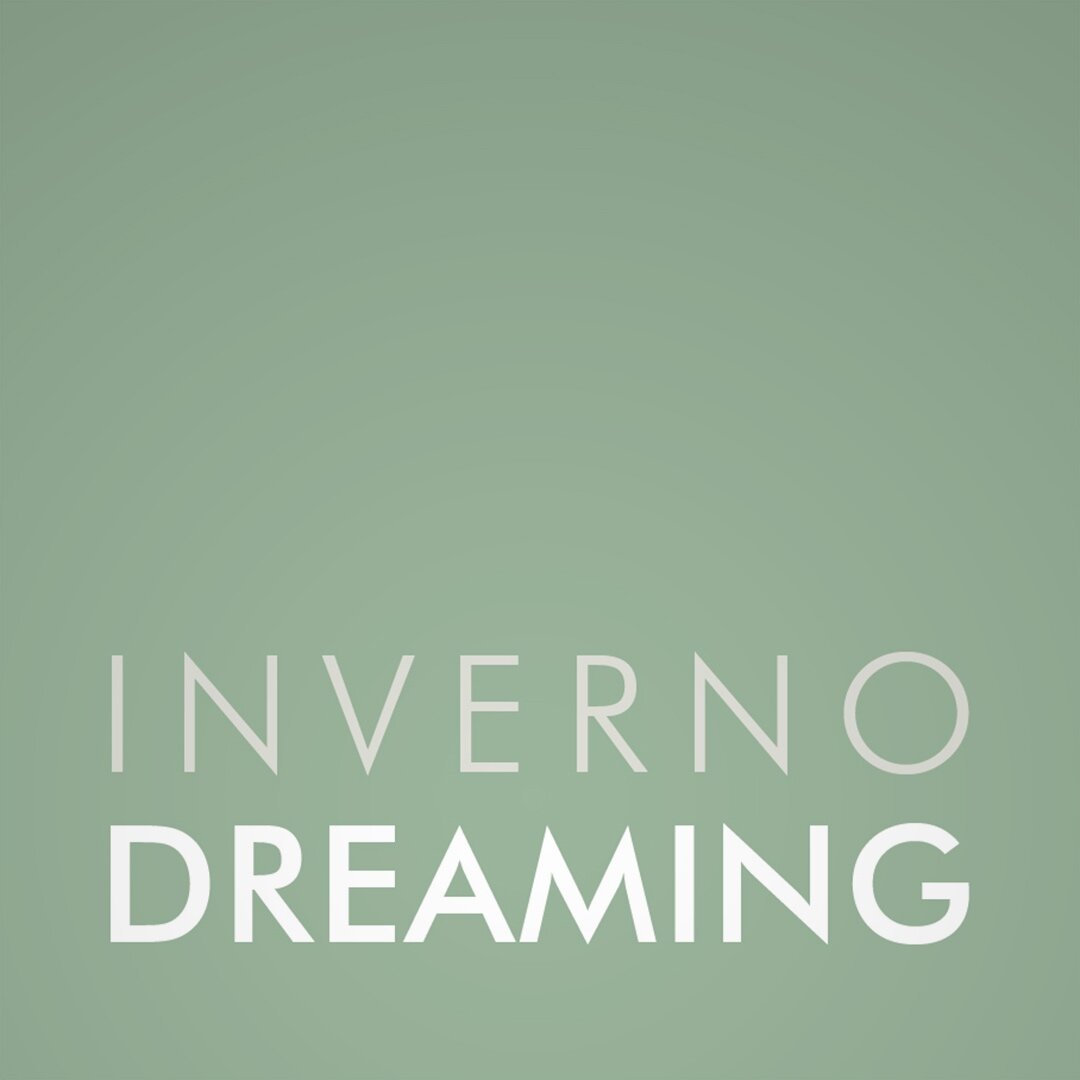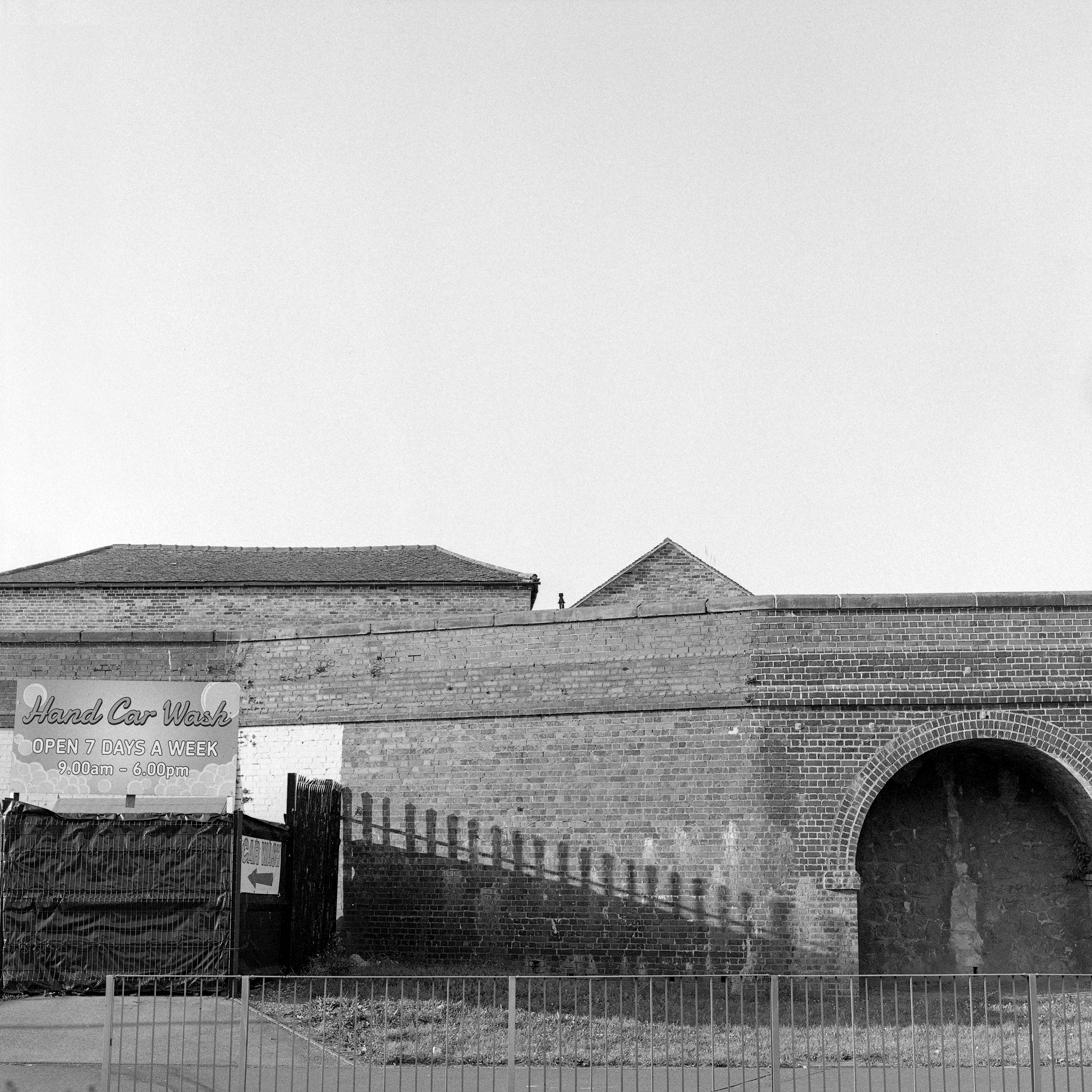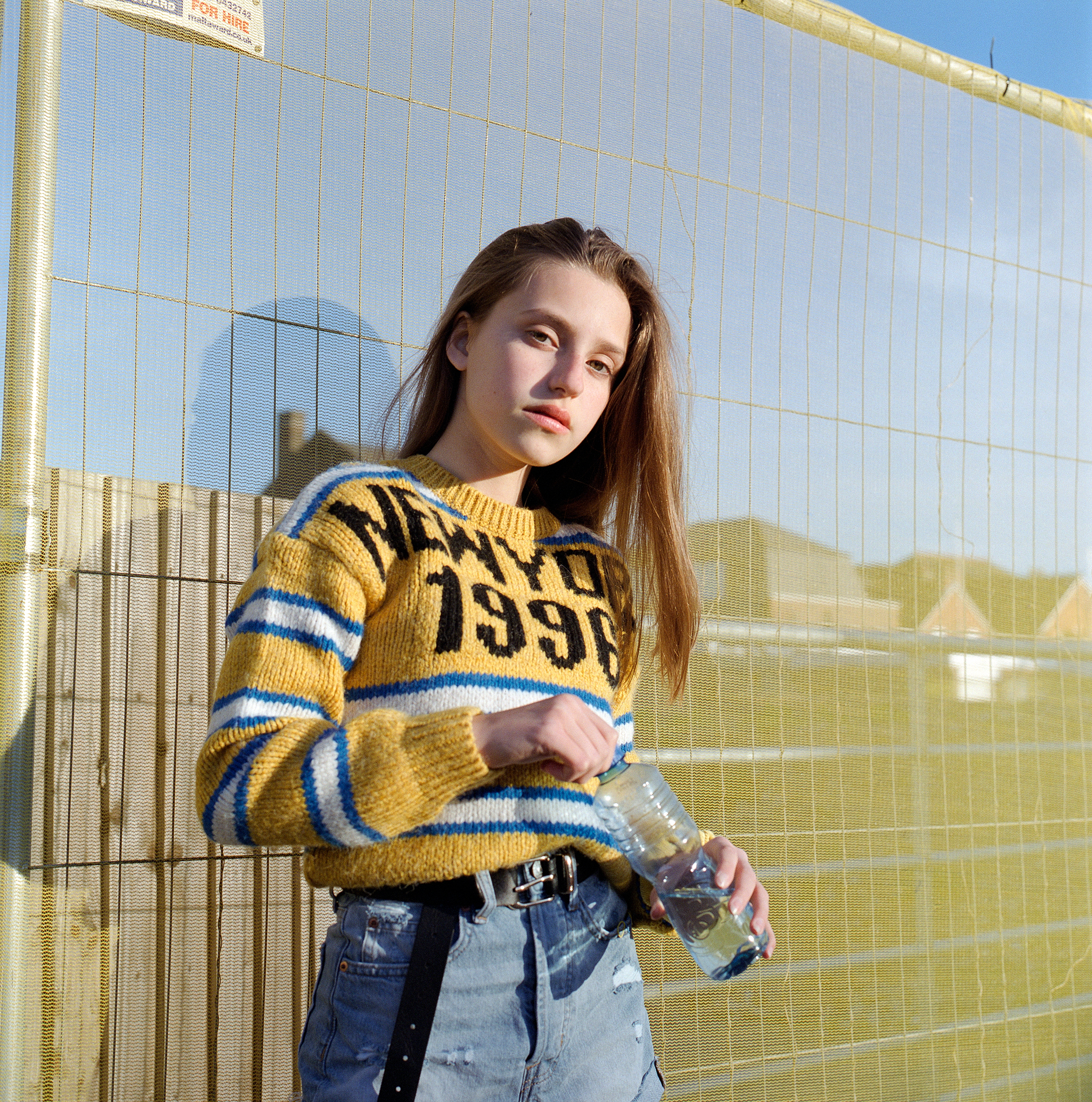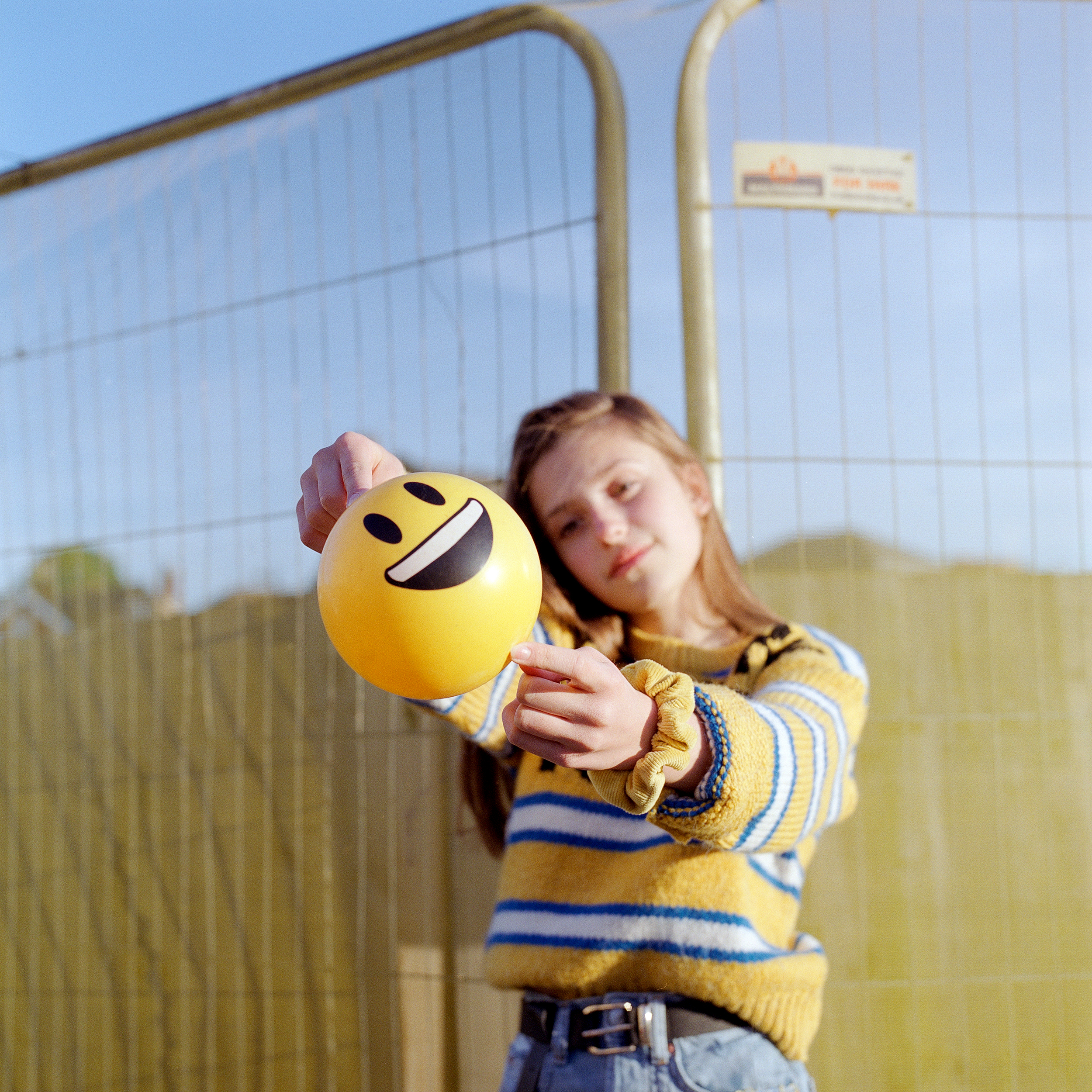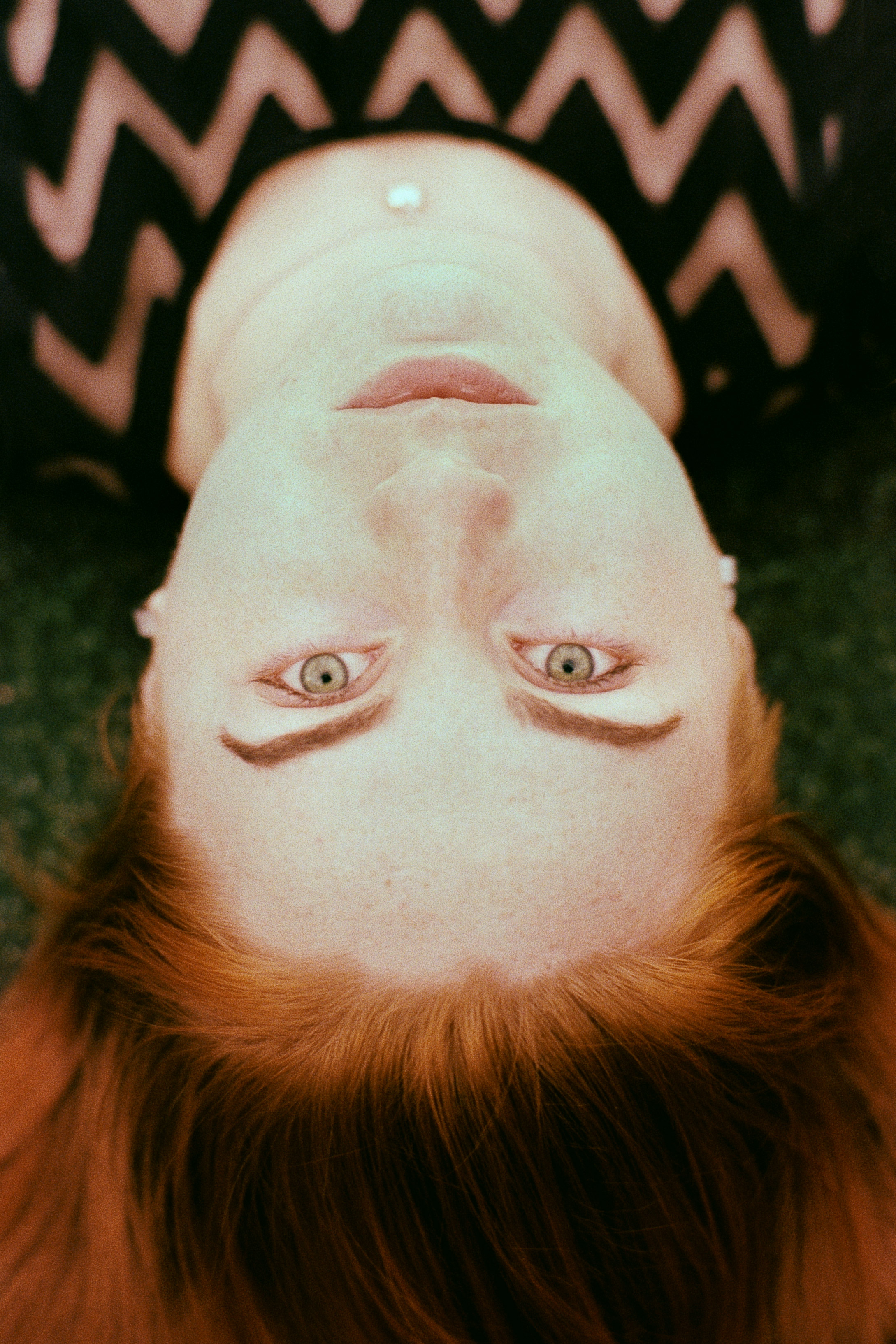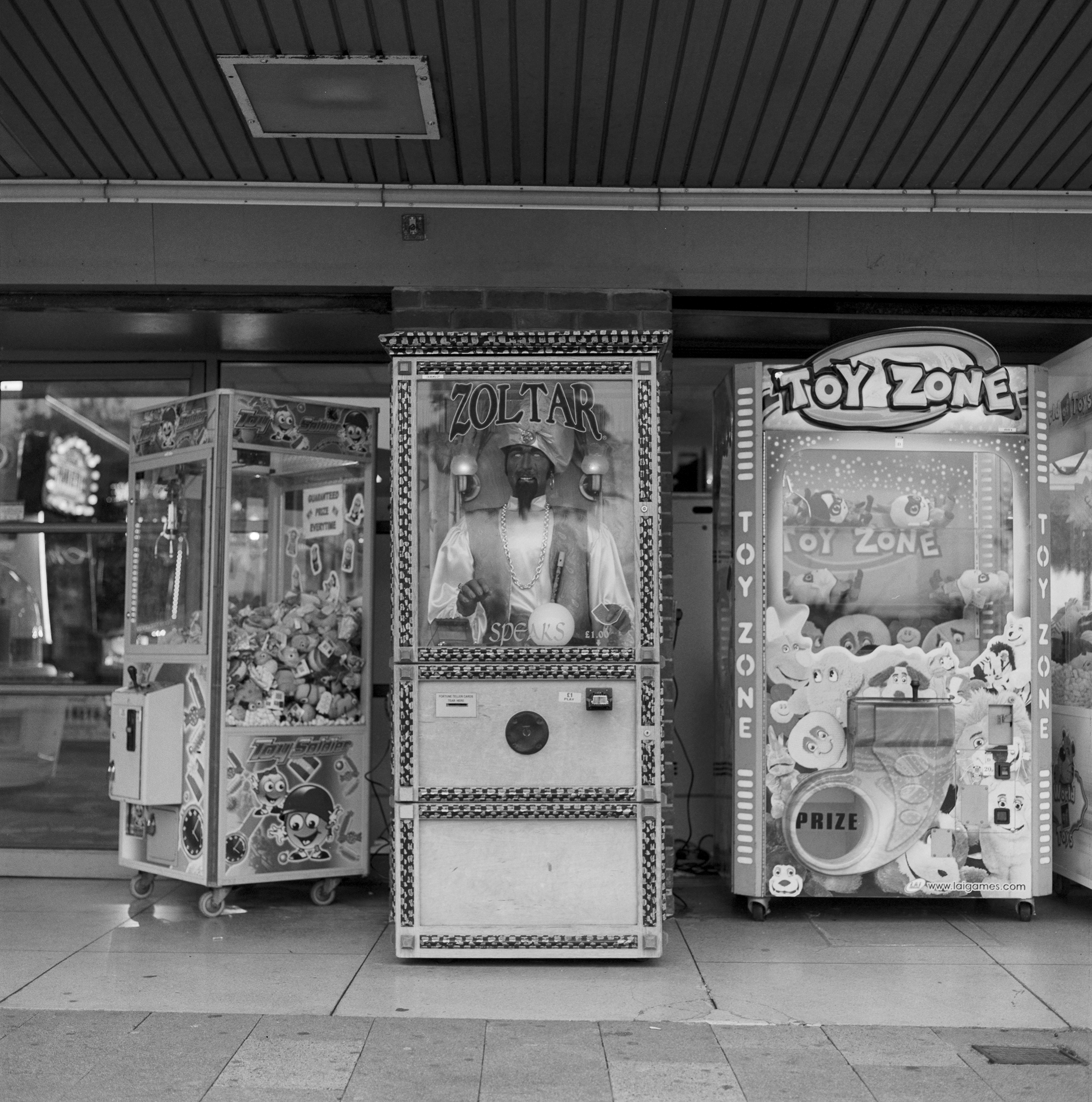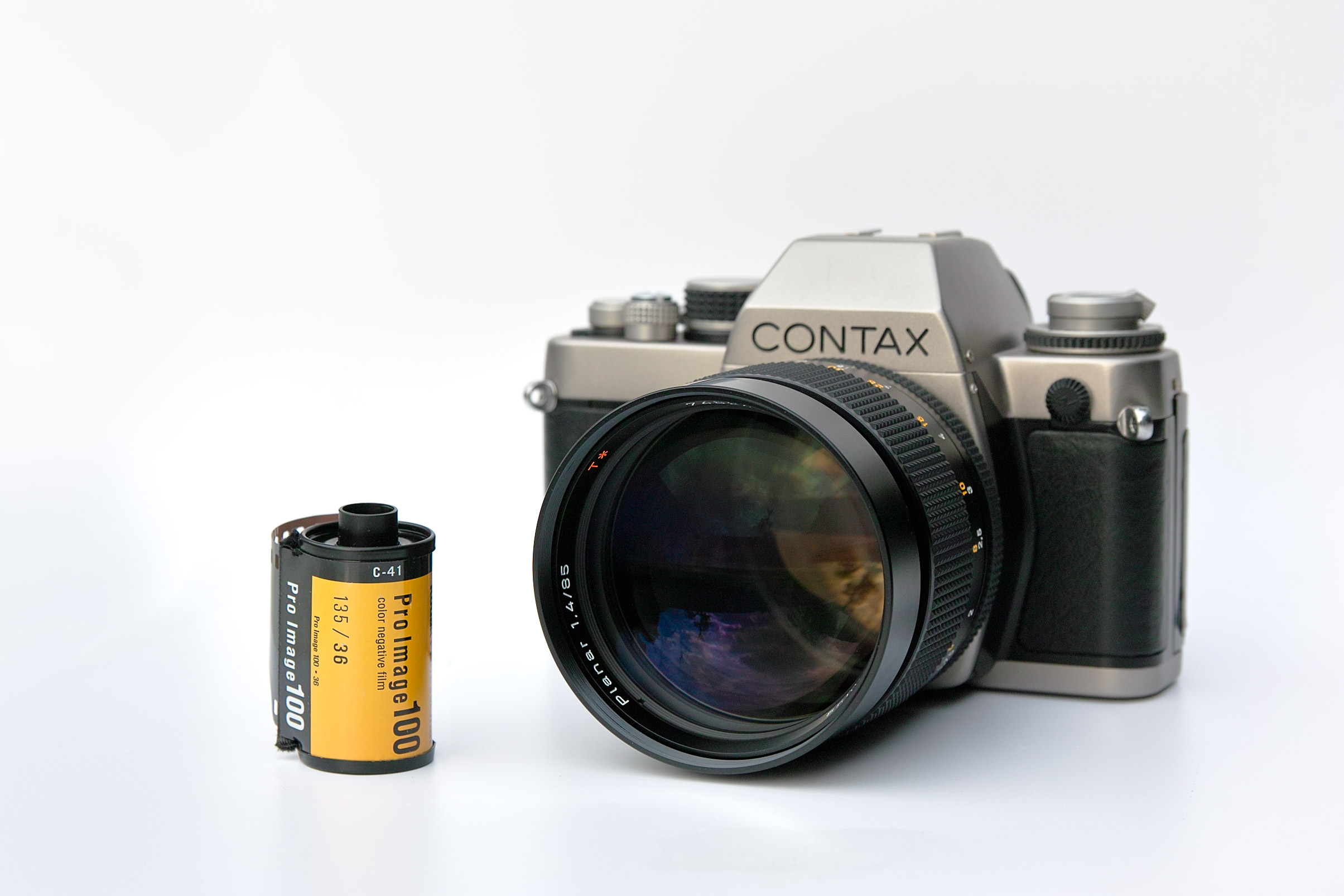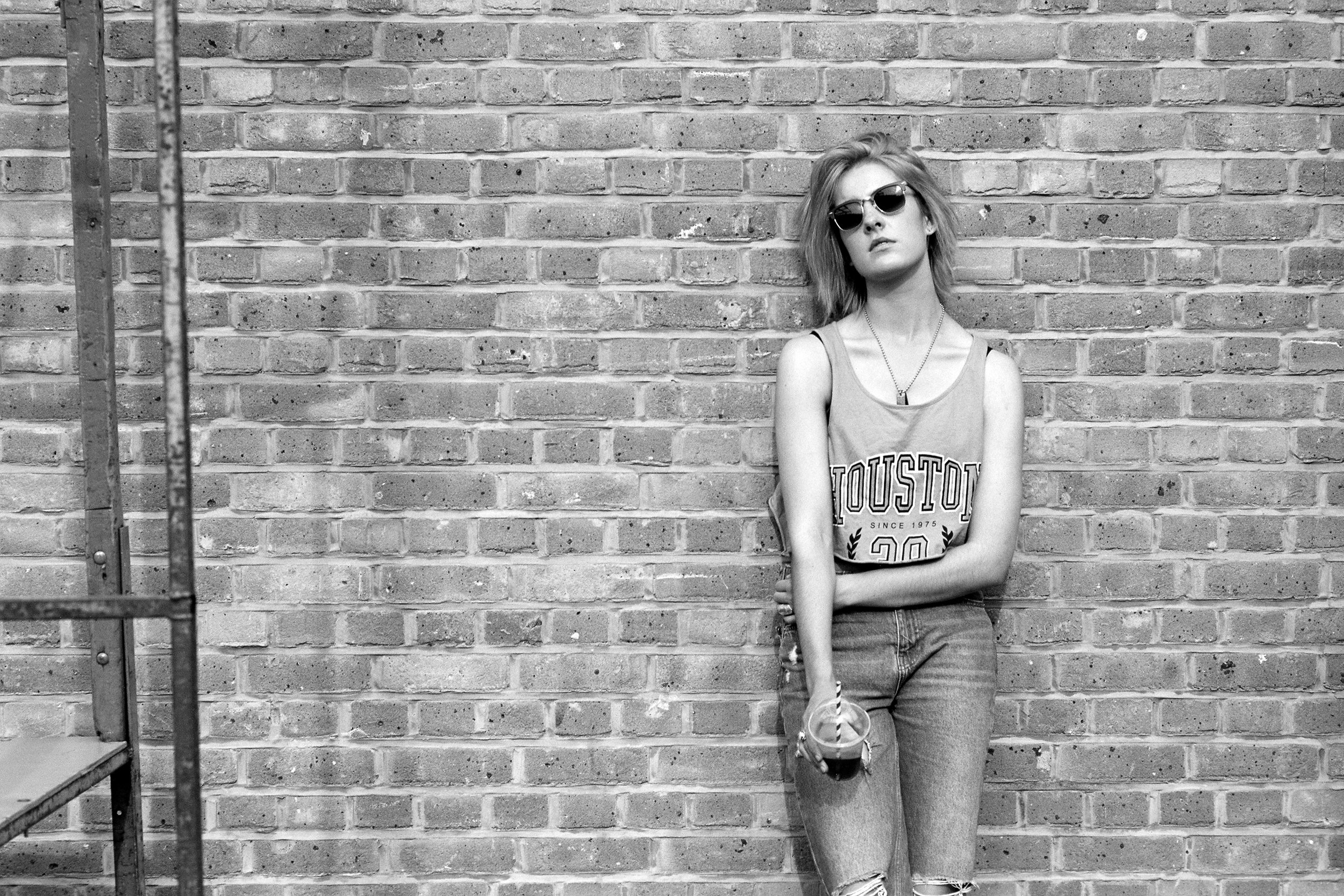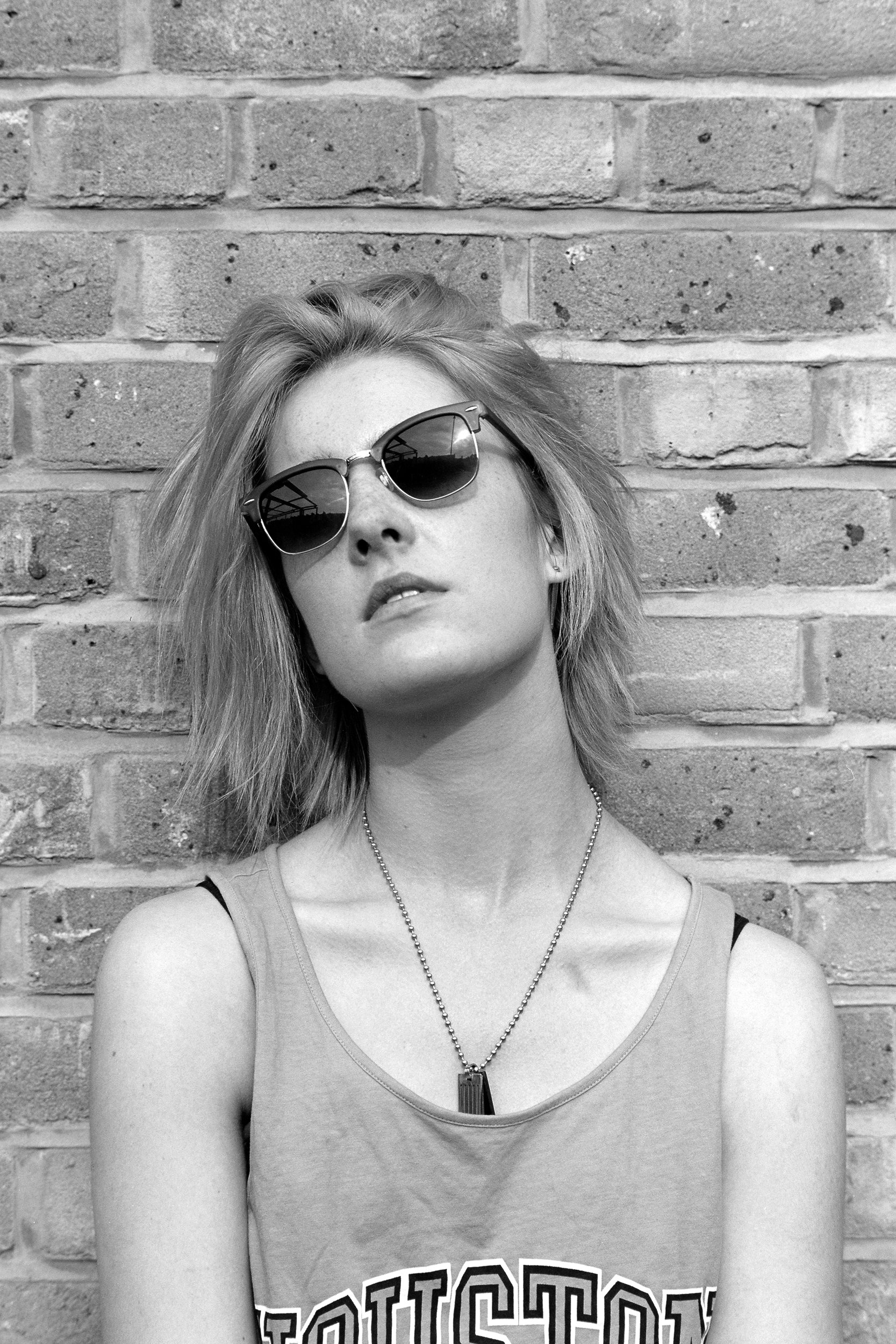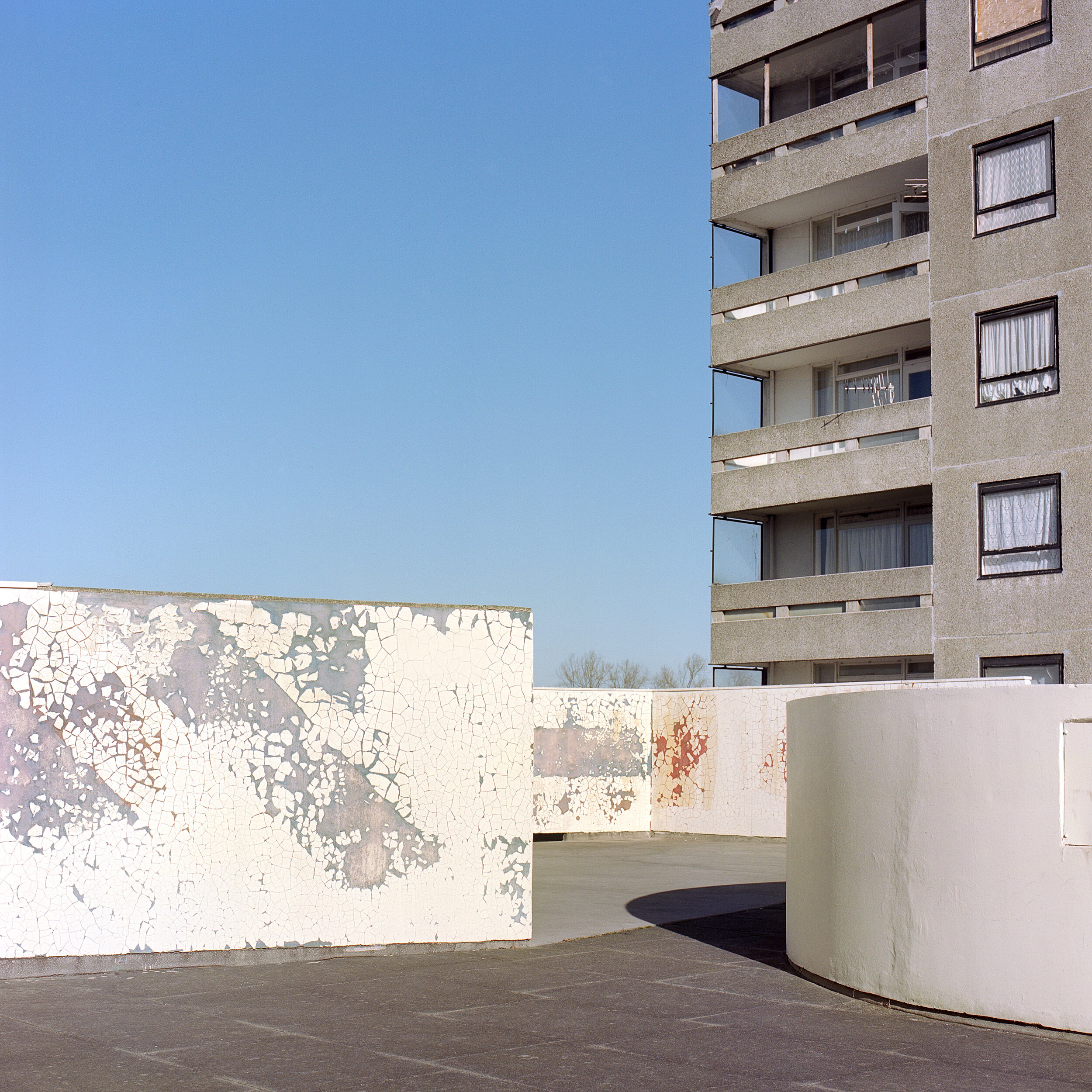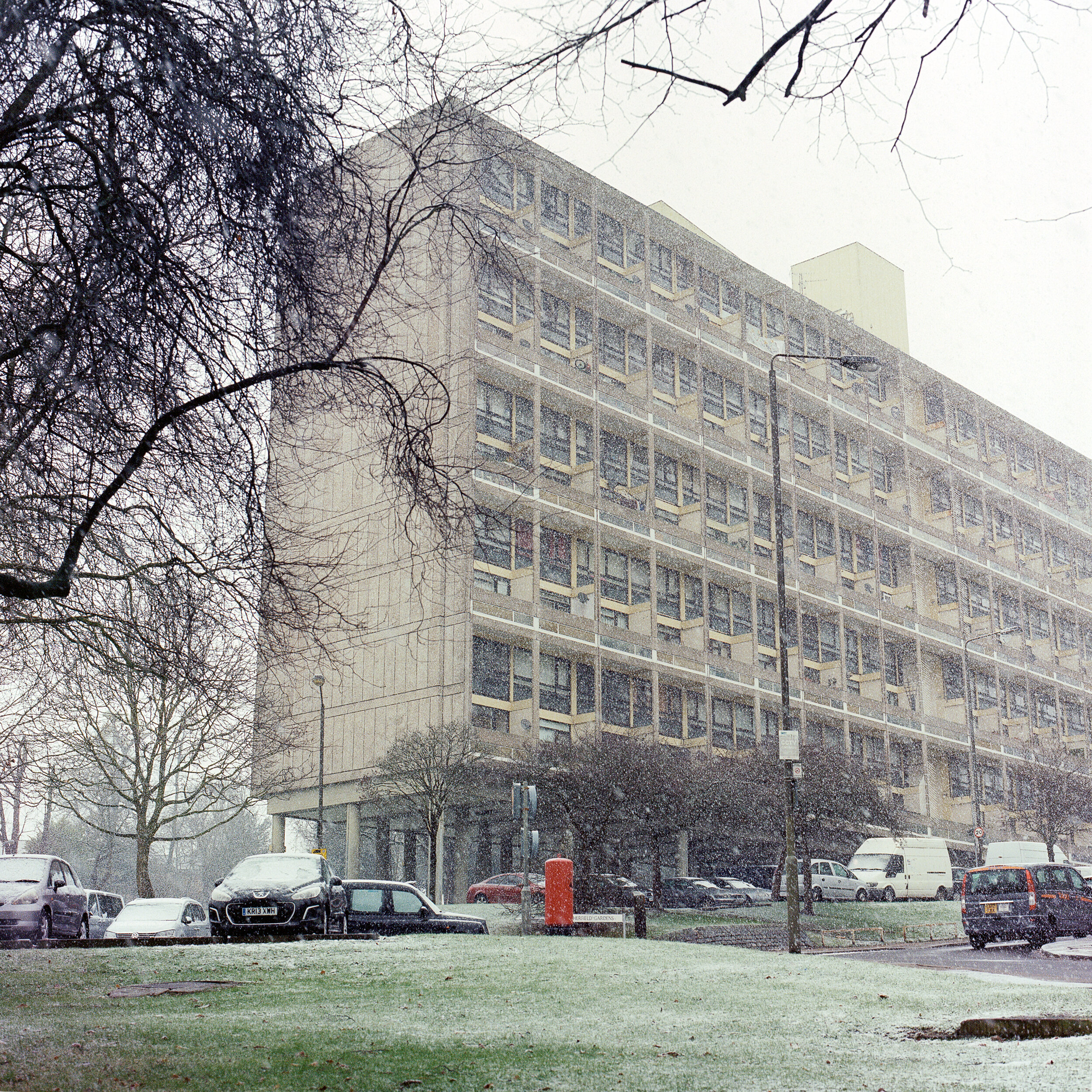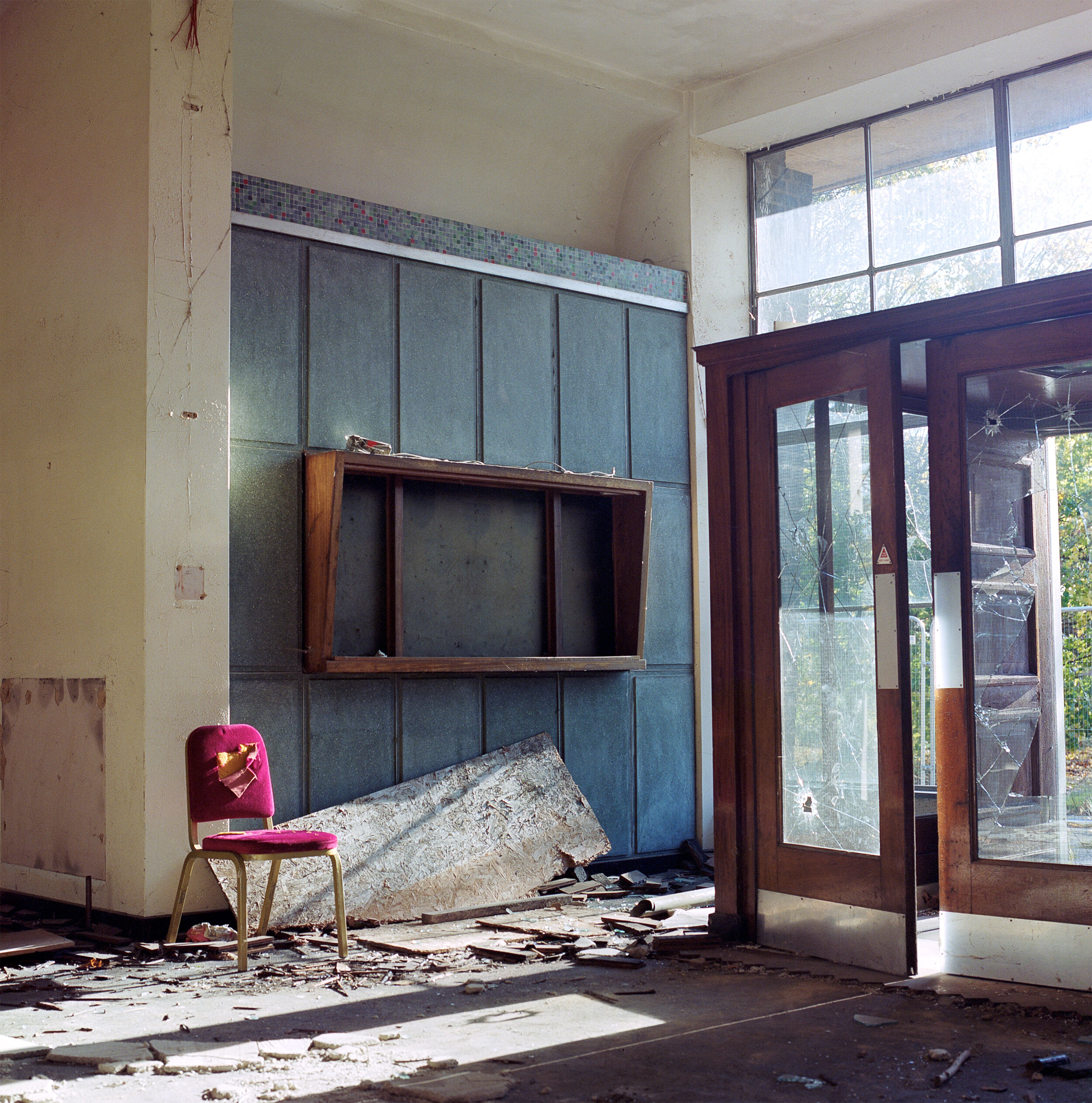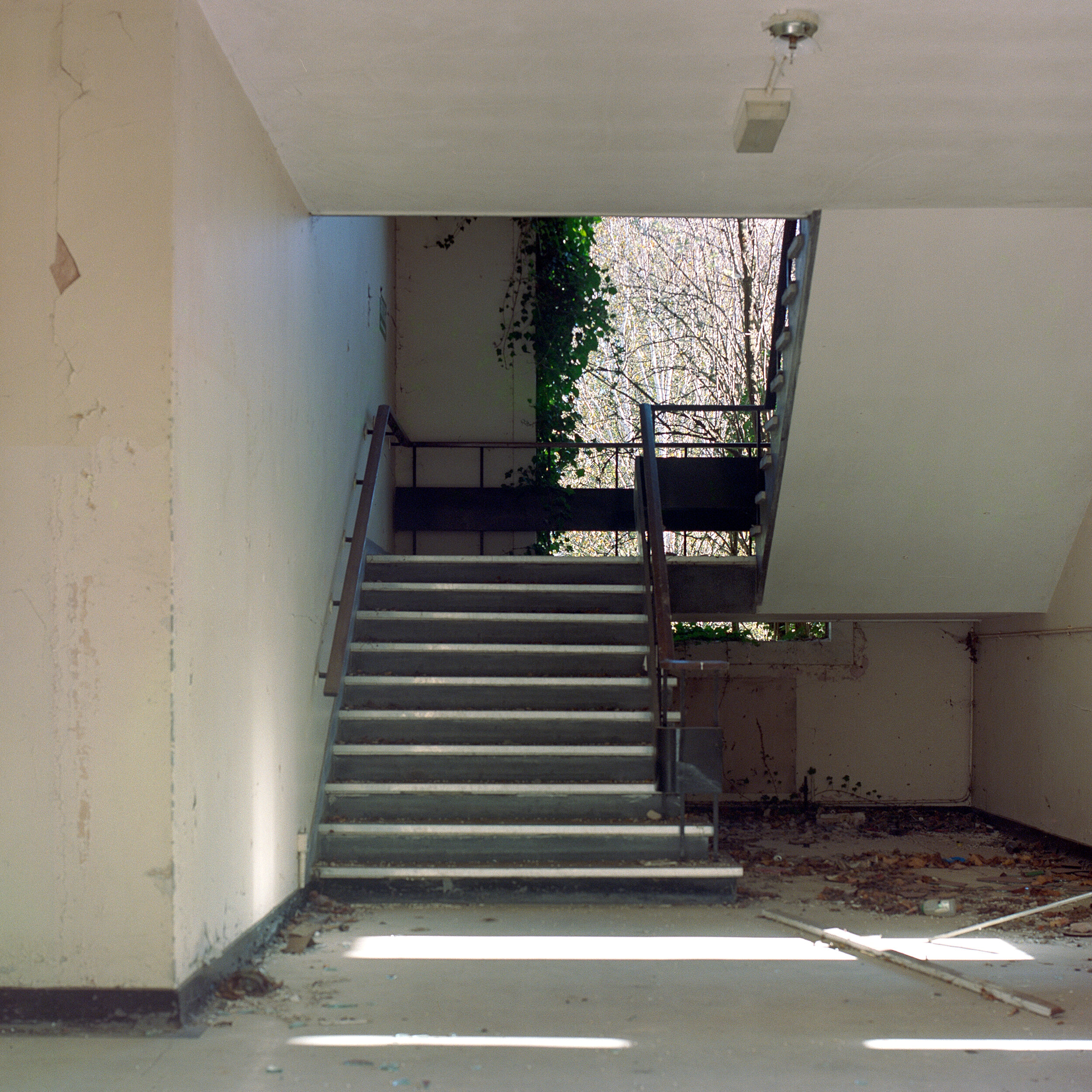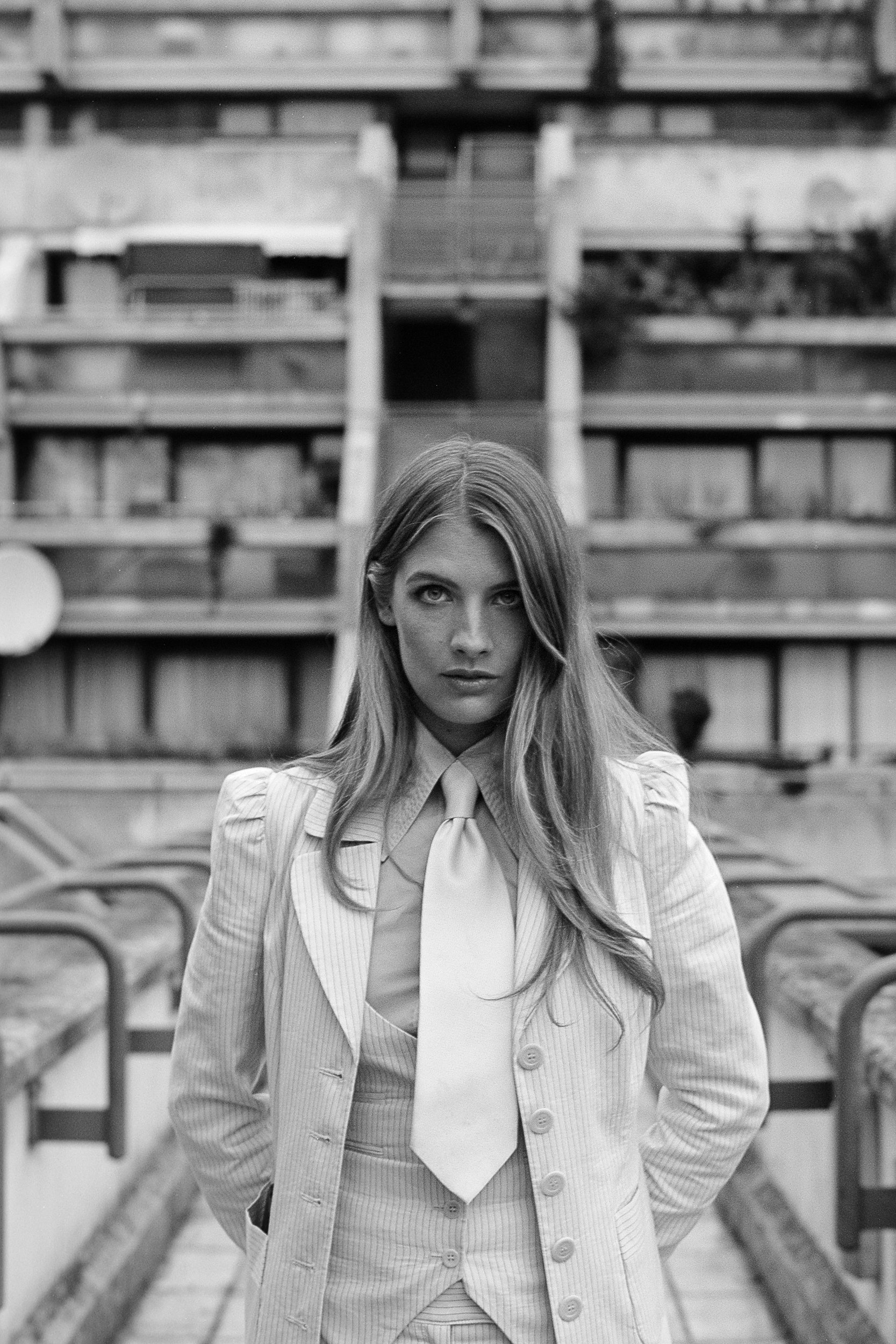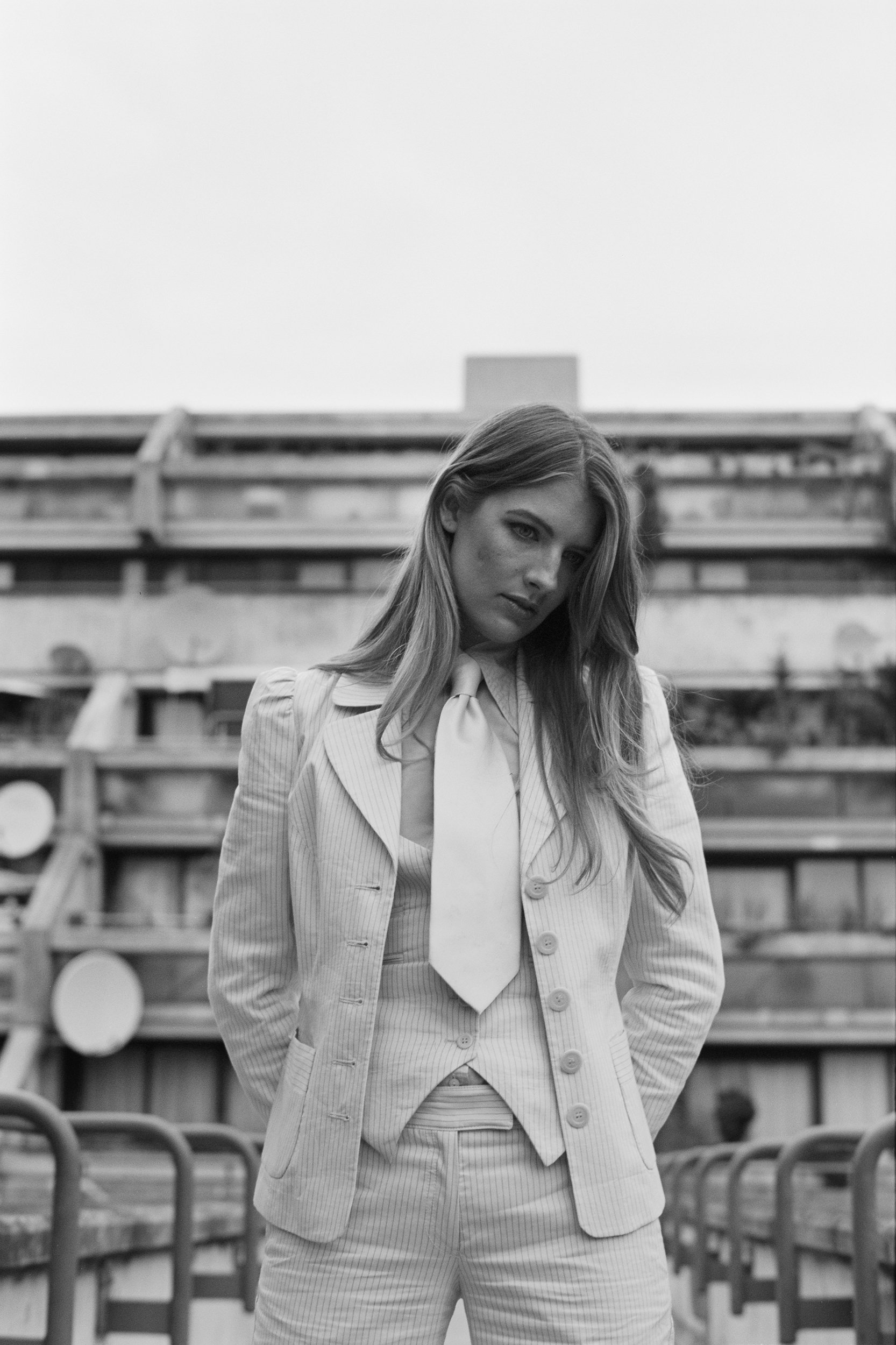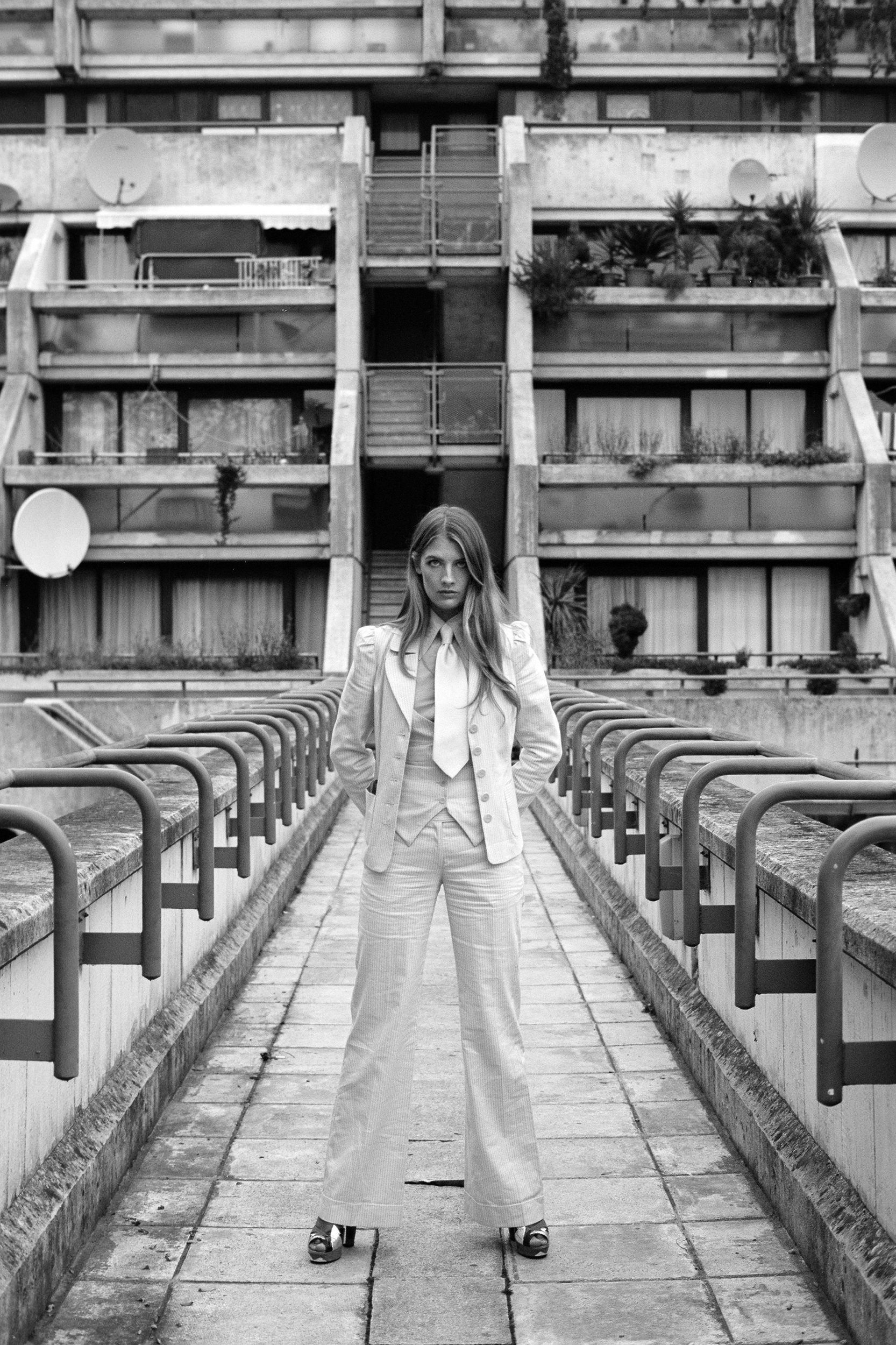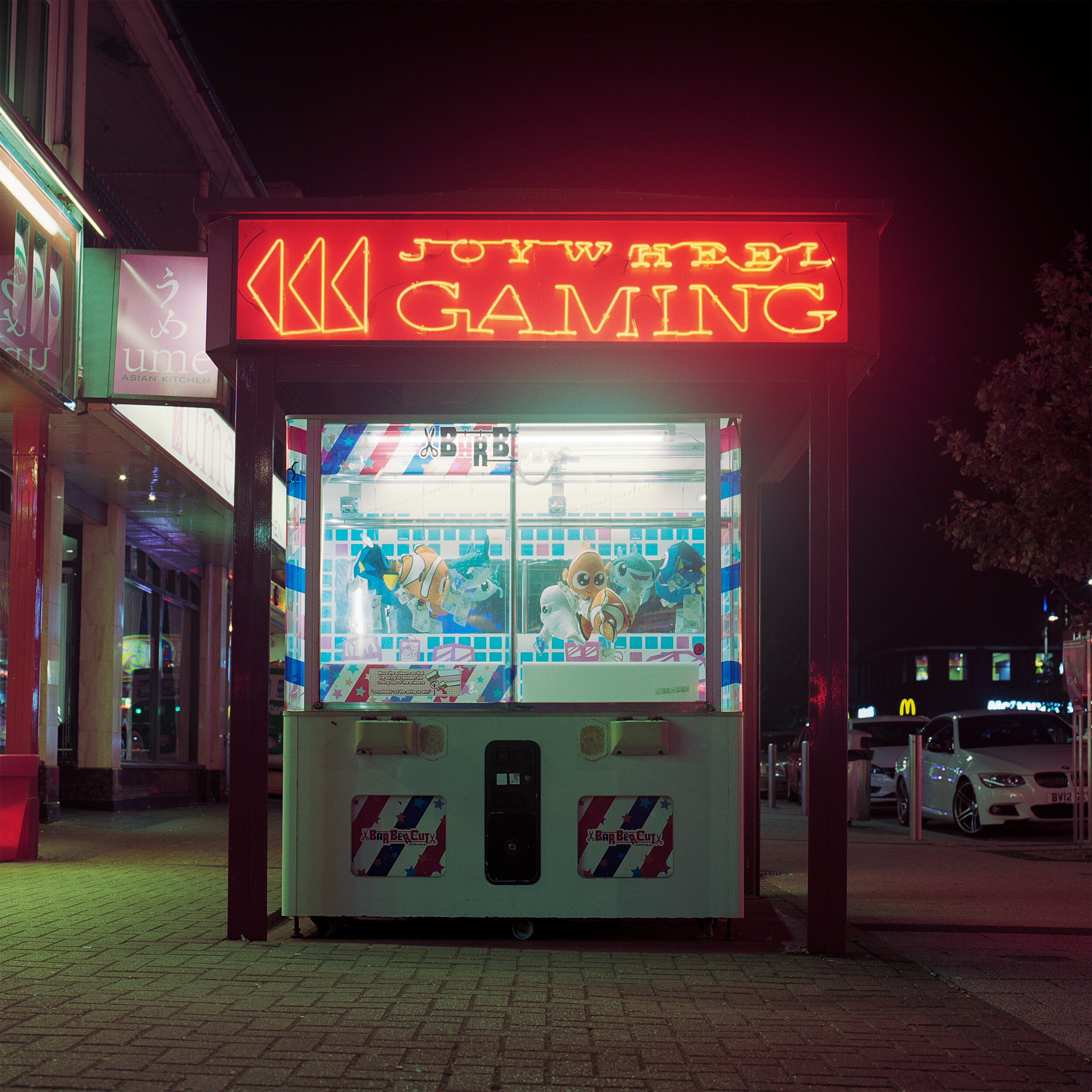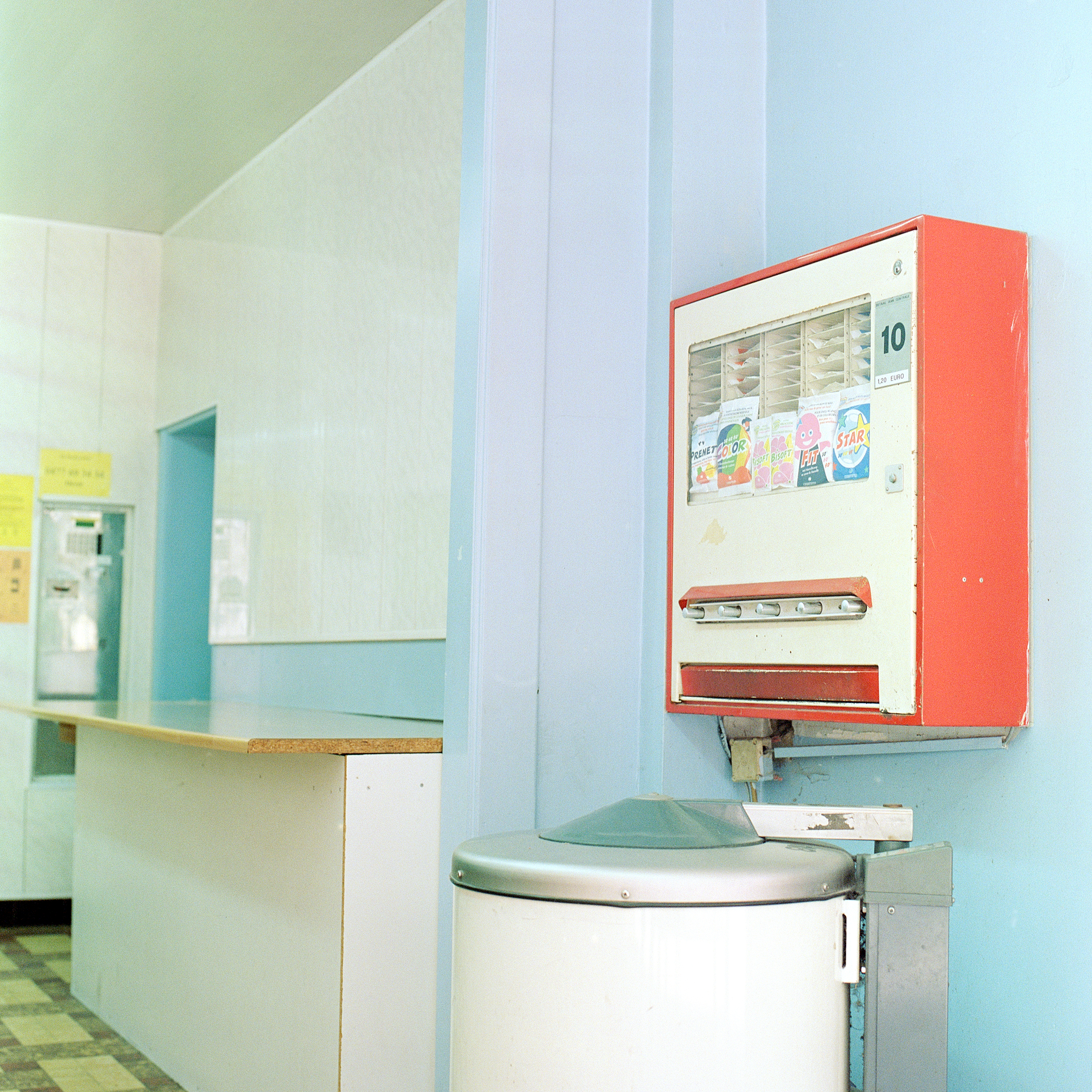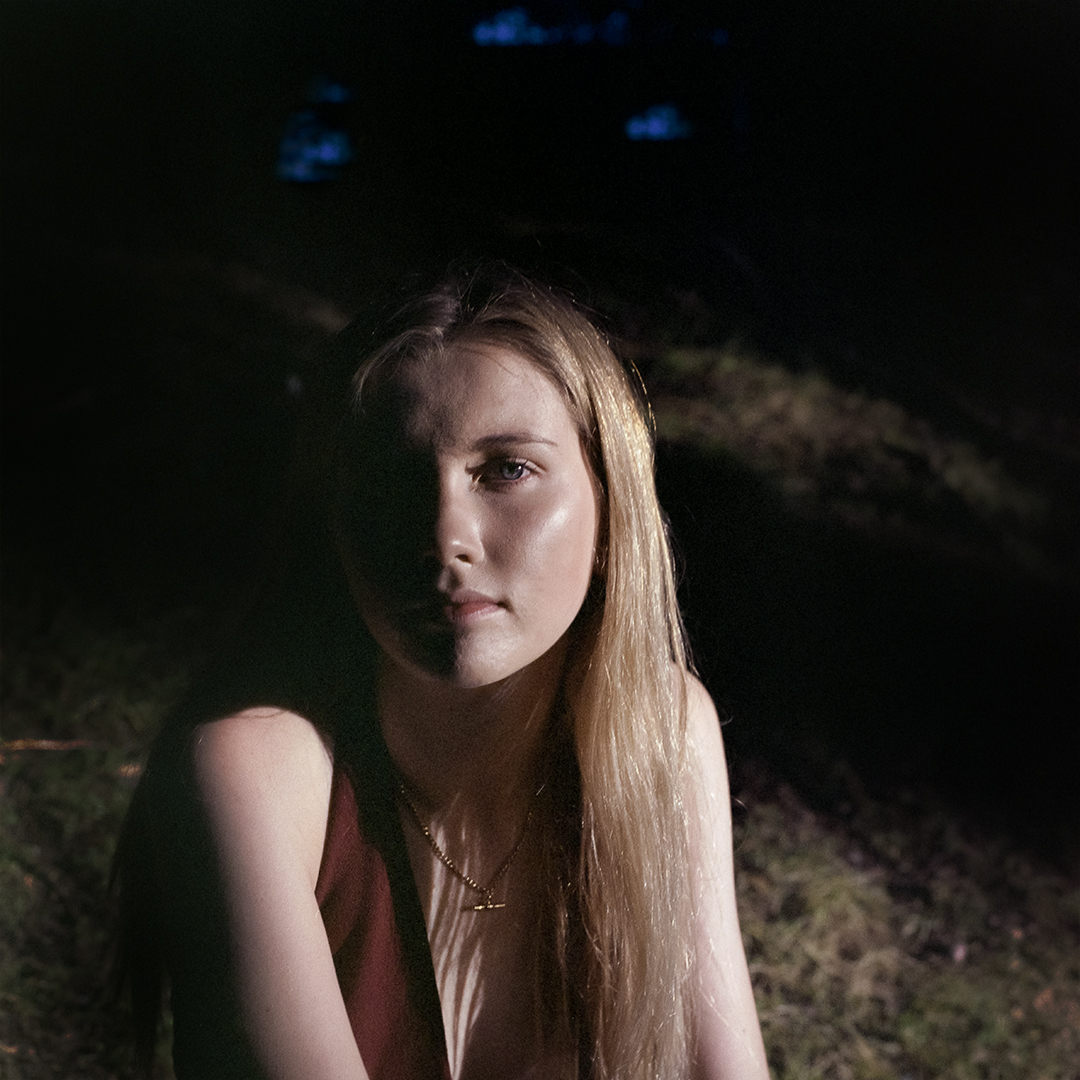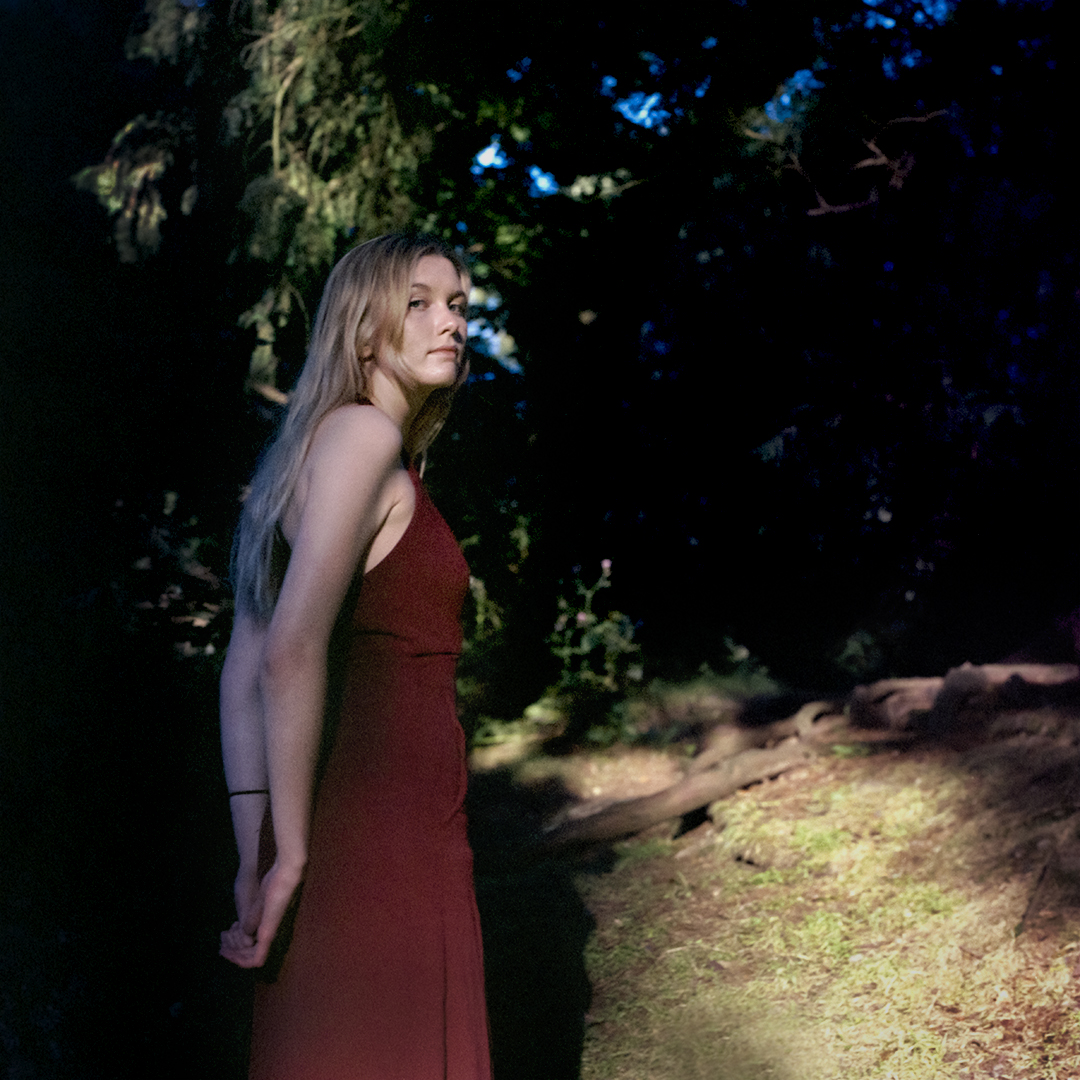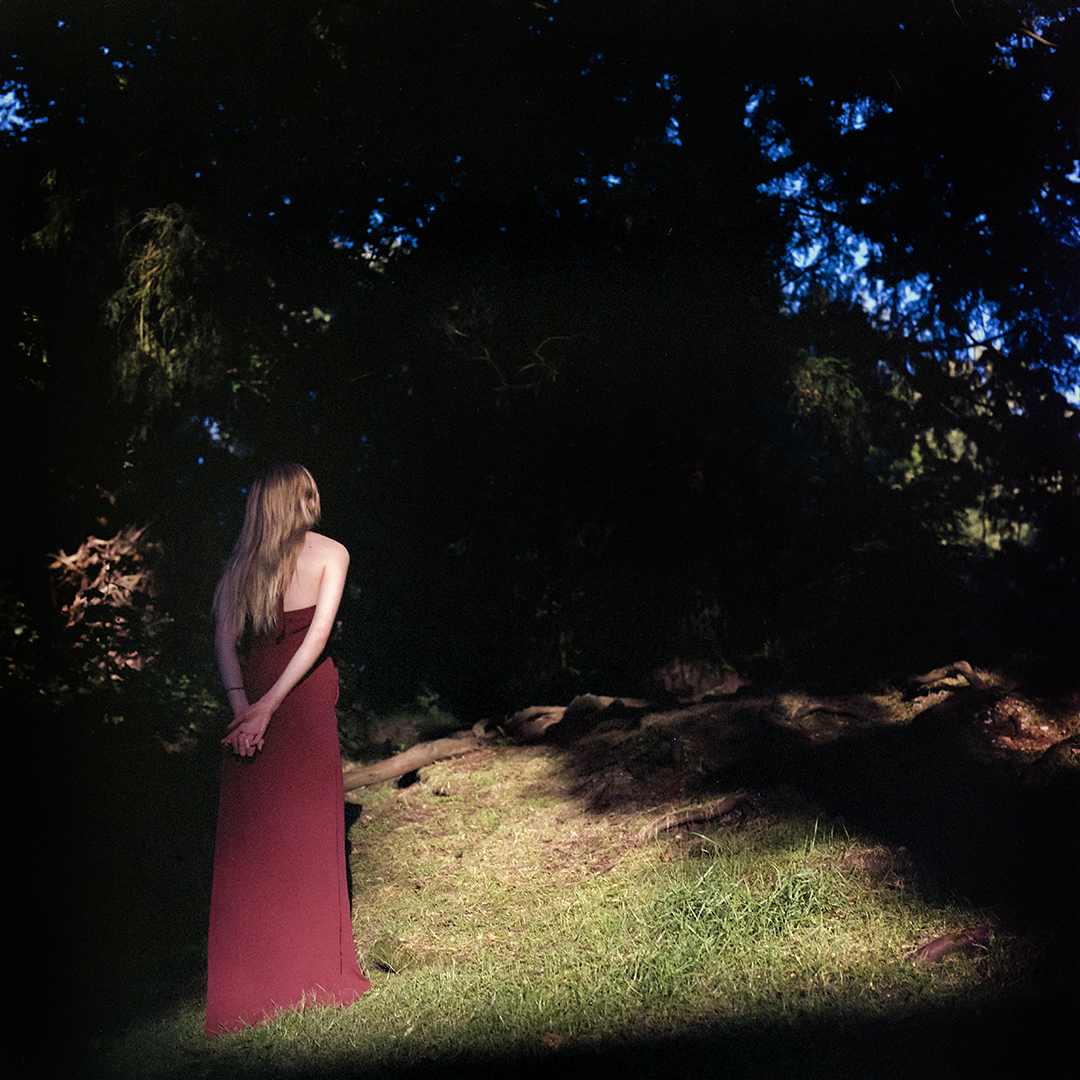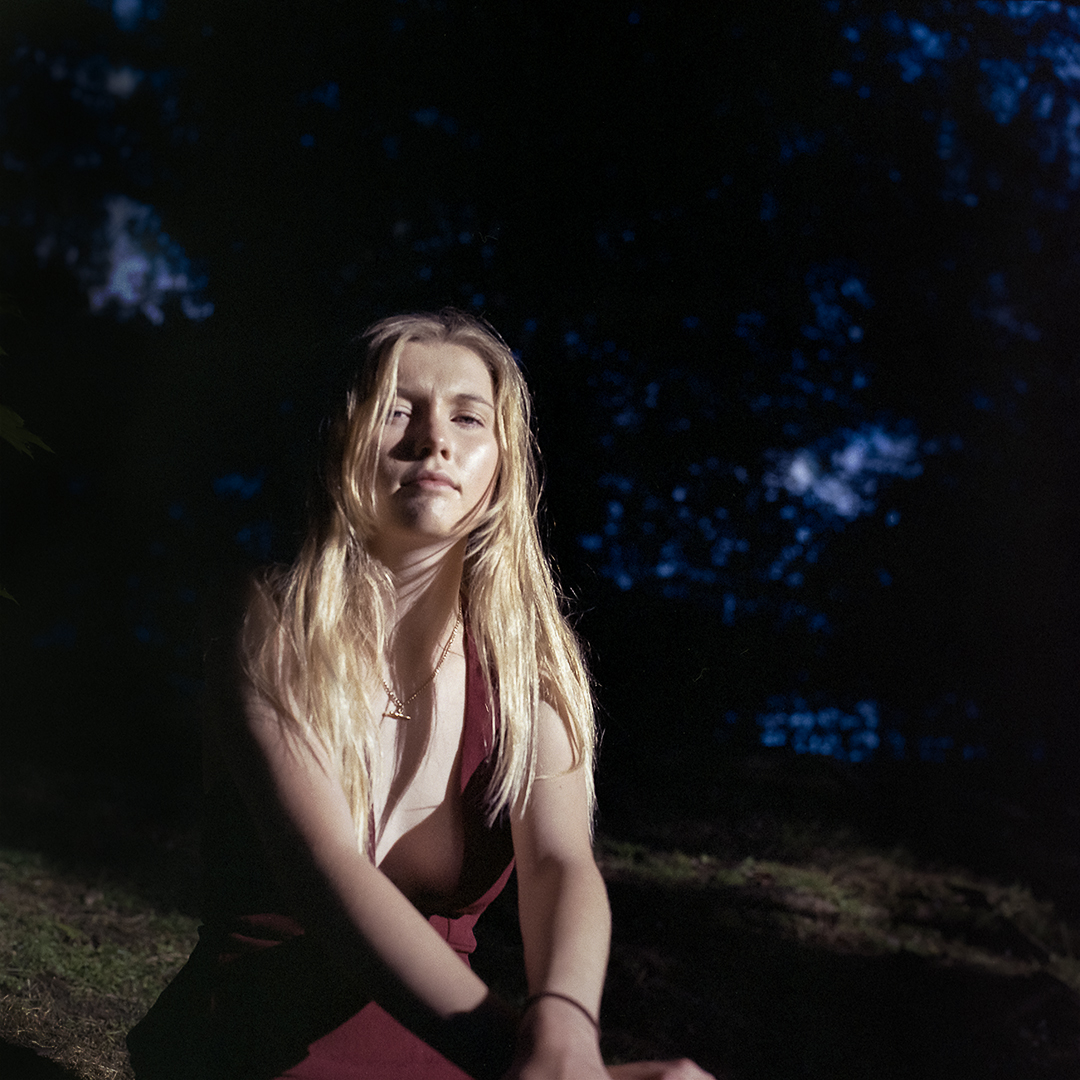All photographed with Hasselblad 500c/m on Kodak Portra 400
Model: Minyala Caldin
Reflected
Stoke-on-Trent
Longton, Staffordshire.
All photographed with Hasselblad 500c/m on Expired 2009 Fuji Neopan 400
Yellow
All photographed with Hasselblad 500c/m on Fuji Pro 400H film.
Cross Processing Fuji Sensia 100
I'm not the most experimental photographer by which I mean experimenting with film, you know, things like bleach bypassing. Souping film by soaking it in various liquids like tea, wine or even urine before shooting it. Developing negatives with coffee or beer. It's certainly not because I don't appreciate the effects of these techniques, far from it I love them.
Until now I've limited myself to double exposures and shooting expired film. Over time I have grown to love shooting out of date film it was something I started doing because at various times I had been gifted old film by photographers who had turned digital. Initially, I just shot these old rolls to see what I got but soon I was fascinated by the resilience of expired film and the effect of how colours and grain changed. Like some kind of guardian of unloved old films I now have a fridge full of all kinds of expired rolls. Hiding amongst these rolls are some E6 transparency films and so it was in the spirit of exploring new horizons I loaded a roll of old 2005 Fuji Sensia 100 into my CONTAX S2, time to try some cross-processing.
I shot Disa in the late afternoon in mixed sunny and cloudy conditions, metering at ISO 80 and overexposing by one more stop where light allowed. With absolutely no idea of the final result, I developed the film with Fuji Hunt X-Press C41 chemistry. The film came off the reel a beautiful green and blue which only intensified as it dried. I could see from the negative or should I say transparency that scanning was going to be unconventional. I use SilverFast scanning software and its workflow requires the selection of a film type for the inversion process. Straightforward when, for example, you are scanning a roll Fuji Pro 400H but not so much when you are inverting an expired cross-processed transparency film.
I knew that my green-blue film would scan red-magenta but its intensity and depth were greatly affected but the film type selection in SilverFast's extensive dropdown catalogue of films. In the end, I settled on one I just liked the look of, one that gave some kind of reality to the skin tones, these being portraits. The scans were further post-processed in Photoshop with some sharpening and contrast controls to achieve these finished results. I feel that it is easily the most creative experimental film technique that I've tried to date. With next to no rules or standards to hem in creativity the photos have a funky, semi-natural look that suited both the shoot and subject. I certainly like the results enough to shoot and cross process again.
Model: Disa Ramstedt
Kings Cross
A quick 45 minute shoot during London Fashion Week at the back of Kings Cross with Witchy Pixie
All shot with CONTAX S2 and Planar 85mm ƒ1.4 on Kodak Portra 800 and Kodak TMAX 400
Out of Season
winter in a coastal town
All photographed with Hasselblad 500c/m on Kodak TMAX400 & Fuji Pro 400H film.
Kodak Pro Image 100 A Portrait Review
Over coffee, at the Photographers Gallery in London, my friend Matt delved deep into his camera bag and passed a roll of Kodak's Pro Image 100 across the table. 'Here try this, I think you'll like it'. he said.
Pro Image is not a new film it was released in 1997 but it is new to the European market and to me. According to Kodak, it is a medium speed colour negative film that has accurate colour, good saturation, pleasing skin-tone and good underexposure latitude. All that and it is part of a welcome trend, that of increasing film stock availability from Kodak and others.
So a couple of weeks later shooting with Natasha on a sunny October afternoon, I loaded my CONTAX S2 with the Pro Image. Using only a Zeiss 85mm ƒ1.4 Planar lens I shot half the roll on a very bright beach with little shade. The other half in a wooded copse. The trees filtered the strong sun into bright pools of light in deep shadows. I quickly wound through the entire roll by spot metering from Natasha's black dress less two stops.
Developing the film in my usual way using Fuji X-Press C41 chemistry I found scanning straightforward with very little post-processing required. ISO 100 was perfect for the light conditions on the beach. In the copse, it handled the extreme light and dark really well too. Pro Image has a stronger colour palette than Portra 400, but still subtle and certainly not as punchy as Ektar 100. The resulting skin-tones are quite pleasing and together with its fine grain and detail it clearly is an impressive portrait film and a good budget alternative to the Portra range.
Model: Natasha Bush
Ferrania P30 Alpha
Feeling a Bit Fellini Part II
In September I shot my first roll of Ferrania’s new P30 Alpha black and white film. I developed this first roll using Tetenal’s Paranol S a developer that I was using at the time. Since then I have changed chemistry to Kodak’s TMAX developer and so for this second roll of P30 I was not able to follow my original recipe. After a bit of head scratching and research I finally settled on:
• Kodak TMAX developer (1:4 Dilution) for 7:15 minutes at 20ºC with Continuous inversions for the first 15 seconds then 5 inversions every 30 seconds thereafter.
• Stop with Kodak Professional Stop for 30 seconds at 20ºC
• Fix with Kodak Professional TMAX Fixer for 5 minutes at room temperature
• Wash for 10 minutes
• Scanned on Nikon CoolScan 8000
Looking at both sets of negatives side by side the film that was developed using Paranol S is more contrasty while the film developed with the Kodak TMAX looks lighter with more mid tones. I couldn't say that one developer is better than the other as there are too many variables for even the beginning of a true comparison, only that both recipes worked well enough to produce satisfactory photos.
I shot Talie at box speed - ISO 80 in moderately bright evening light. The back streets of Dalston, East London were by then either in soft shadow or glowing golden-hour light. For exposure, I metered from her skin using the cameras spot meter + 2 stops and confirming with the odd incident reading from a handheld. Most frames were shot at ƒ5.6 with 85mm Planar ƒ1.4 lens on a CONTAX S2.
All photographed with CONTAX S2 on Ferrania P30 Alpha film.
Model: Talie Eigeland
Revisit
Returning to Thamesmead
As a photographer, I’m always looking for new subjects to photograph. Sometimes though returning to a previous location can be just as rewarding. Revisiting a place will never result in replicating an earlier experience, things will always be different. Light, time, season and weather are near impossible to duplicate. Places evolve, walls, shops, buildings change. Using a different format or lens present new perspectives. Even being in a different state of mind and mood are factors that can lead to new photographic opportunities. So two years after my first visit, on a wet, cold and grey Sunday, I returned to Thamesmead. This time on a sharp and crisp winters day. With clear skies and cold blue light, I found low shadows and distinct contrast, this together with changes in the buildings and landscape resulted in a very different set of pictures. For me, once again proving the value of a revisit.
All photographed with Hasselblad 500c/m on Kodak TMAX400 & Kodak Portra 160 film.
Alton Estate, Roehampton.
All photographed with Hasselblad 500c/m on Kodak TMAX400 & Kodak Portra 400 film.
Still Corners
All photographed with Hasselblad 500c/m on Kodak Portra 400 film.
Feeling a bit Fellini
In 1963 Federico Fellini shot his famous film 8½. Starring Marcello Mastroianni and Claudia Cardinale it is still considered to be one of the greatest Italian films of all time. 8½ was shot in black and white using Ferrania P30 film stock. The look that P30 gave 8½ created a demand so high that Ferrania produced both 35mm and 120 versions so that non-professional still photographers could ‘feel a bit Fellini’. It was a huge success.
FILM Ferrania was originally founded in 1917 in Liguria on Italy’s Riviera. It became one of the worlds most important photographic film manufacturers making famous stocks such as P30, Ferraniacolor and ScotchChrome. By the early 2000s because of the global turn to digital camera technology, it like so many film producers was suffering economically. Ferrania eventually closed its factory in 2010. In 2012 a small dedicated team decided to rebuild Ferrania and have been tirelessly working toward that goal since. In spring this year P30 Alpha began shipping to photographers worldwide.
Ferrania is one of only three factories in the world able to research, develop and manufacture colour and black & white film totally in-house. They are truly committed to the rebirth of analogue film and I certainly wish them the very best, thanks guys.
P30 Alpha is a new film and Ferrania have asked the film community for technical feedback, so here's my bit:
I Shot Jessica on an overcast day at box speed using a CONTAX S2 with Zeiss Planar 50mm ƒ1.7 lens.
• Developed with Tetenal Paranol S (1:50 Dilution) for 14 minutes at 20ºC with Continuous inversions for the first 30 seconds then 10 inversions every minute
• Stop with Tetenal Indecet 1 minute at 20ºC
• Fix with Tetenal Superfix 5 minutes at room temperature
• Wash for 10 minutes
• Scanned on Nikon Coolscan 8000
All photographed with CONTAX S2 on Ferrania P30 Alpha film.
Model: Jessica Louise Gladstone
End of August
All photographed with Hasselblad 500c/m on Kodak Portra 160
The Pergola Portraits
Great to see some photos from my recent shot with Talie Eigeland taken at Hampstead's Hill Gardens and Pergola on Photo/Foto Magazine. Check out their site, there are over 150 folios and interviews from talented photographers all around the world.
All photographed with Hasselblad 500c/m on Kodak TMAX400 & Kodak Portra 400 film.
Model: Talie Eigeland
Residence on Kloosterstraat
Antwerp, Belgium.
The net curtains and blinds draped heavy in the windows of lower floor apartments, like fabric guards protecting the privacy of the residences on Kloosterstraat.
All photographed with CONTAX S2 and Zeiss 28mm Distagon T* ƒ2.8 on Fuji Neopan 400 film.
Wassalon Antwerp
All photographed with Hasselblad 500c/m on Kodak Portra 800 film.
Cropredy Bridge
This short series of photos was taken at Cropredy Bridge Cars based in rural Oxfordshire. Since 1972 Cropredy Bridge have specialised in the restoration of classic Jensen cars, in particular, the famous Interceptor. The Jensen Interceptor is a genuine British classic, built at their West Bromwich factory from 1966 to 1976 it was a truly international car with its Italian designed body and American V8 power, it is rightly considered one of the most beautiful cars of the last 50 years.
All photographed with Hasselblad 500c/m on Kodak TMAX400 & Kodak Ektar 100 film.
Autumn Portraits
All photographed with Hasselblad 500c/m on Kodak TMAX400 & Kodak Portra 400 film.
Model: Jessica Louise Gladstone
Expired 1987
KODAK VARICOLOR III - A TRACE OF SOFT TOE
A couple of years ago I wrote about shooting a roll of 21-year-old expired Fuji Velvia 50. A friend had given me a couple of rolls that had expired in 1993 and I used one somewhat unconventionally for a series of portraits. I'm not much of a photographic experimenter but I do enjoy using expired film. Last month I was given a bag of various long expired films from a photographer who had converted to digital in the early 2000s. He had kept them in his attic hoping one day he might shot some film again. Finally realising that this would probably never happen he decided to give them to a good home, me. Now, in my fridge, the bag is a mishmash of 35mm and 120 films all dating from the late 80's. What caught my eye were some rolls of Kodak Varicolor III Professional 160. I wasn't familiar with this film and so did a bit of research online. Discovering that it was sold as a professional grade general portrait film and was described by Kodak as "Medium speed color negative film designed for fine portraiture, it combines a “soft toe,” moderate contrast, and moderate color saturation. For fine portraiture, these characteristics maximize the retention of highlight and shadow detail, with exceptional flesh-tone reproduction under controlled lighting". I was pretty sure that I wouldn't get any soft toe whatever that is from my rolls of 29-year-old Varicolor, but it would be interesting to see what I could get. So in a pool of strong evening light and after shooting Rosie with some fresh Kodak Portra 800, I shot a roll.
I exposed the ISO 160 Varicolor at ISO 64 and developed it in Tetenal Colortec C41 at 38ºc for an extra 45 seconds; 4:00, not the usual 3:15. The developed roll had a distinct blue sheen when wet, something I've not seen before however it did eventually dry back to orange. The negatives were very thin, apparently, an issue with Varicolor even when new. Kodak's own notes stated "Because of the film’s “soft toe” and moderate contrast, photographers (under many circumstances) prefer to “build” slightly higher contrast and color by exposing the film at ISO 125. This also provides additional protection from potential underexposure". After scanning I made some simple post-processing adjustments with curves and some local burning-in of the dark areas to produce the final photos. What struck me were the flecks of blue sky coming through the trees, the intensity of this blue is curious. This for me is a kind of signature. Overall the final photos are a true testament to photographic film's ability to withstand the passage of time and still deliver beautiful images.
All photoigraphed with Hasselblad 500c/m on Kodak 160 Varicolor film.
Model: Rosie Gregory
Tripod... It's a Monopod
On a recent family day out we visited Hampton Court Palace the famed Tudor residence of King Henry VIII. Sited on the River Thames at Hampton some 11 miles from central London this 500-year-old royal palace remains one of the largest Tudor buildings in England. I don't usually take a camera on outings like these, beautiful palaces and castles don't whet my photographic appetite. Even though I live very close to the palace I had not been there since I was at school and at this rate, I may never go again, and so as a sort of challenge, I thought why not?
Shooting Kodak TMAX 400 film I was fairly sure that there would not be enough light to hand hold and so I bought a monopod with me. Sure enough in the interiors rooms at ƒ8 I needed 1/8, well within the usable limits of a monopod. Before shooting any interior shots I asked the staff if it was okay to use a monopod. The staff member consulted with a colleague on her walkie-talkie and said that a monopod was okay, however for future reference a tripod was not. At this point, I also established that the photos were not for commercial use and that in effect I was a tourist like the hundreds of others visitors surrounding me, all happily shooting away with their phones and DSLR's - on ISO6400 no doubt. Albeit I was using a rather strange contraption, a film camera.
A little later I was in another wing of the palace and a guard came up to me to say that I was not allowed to take photos using a tripod, I told him it was a monopod and that I had sought permission and that it had been granted. Of course, he went off to check and so as I wondered out of the room yet another guard stopped me and asked if I could wait (and not leave the room) while they awaited their response. "No, if you want to find me I will be in the next room" I told them. Having no desire to stand about waiting because they didn't know their own rules.
10 minutes later while standing in the garden with my wife and daughter a senior guard came up to me and politely told me that photography is not permitted in the palace with tripods. It's a monopod I explained. He said that they were not allowed either. Okay no problem, “But can you tell me why I had been told it was permitted when I asked and now it’s not?" He pointed to the two bands around the cuff of his red jacket in a puerile implication that he was in charge and went on to say that tripods are a health and safety concern as other visitors can trip on them and that they damage the floor - like shoes don’t! Furthermore, he went on to say that basically, they don’t like “proper" photos been taken by photographers, "Only tourist with point and shoots cameras really". Apparently, the people at Historic Royal Palaces get snooty when unofficial photos appear on the web and in publications he added. Er… what do they think it is, the 1980s? It could be argued that phones can take a perfectly good photo of an interior and moments later it will be on Facebook, Instagram, Flickr or any other website. All this, while I'm still loading a film in the back of my camera and fiddling about with my light meter. He even asked me what type of photos I was taking? I couldn't see the relevance of the question but my response was measured and polite "I’m taking photos of the palace, like everybody else." Later at home I looked on the official Historic Royal Palaces website and this is the one and only rule surrounding the whole debacle, nothing about health and safety, nothing about monopods and certainly nothing about “proper” photography.
• The use of tripods inside the building is not permitted unless arrangements have been made in advance with our conservation team (to protect the floors from the tripod base so that it doesn't cause damage).
The protection of cultural treasures and valuable antiques is an important job no doubt, but hassling paying visitors who have not done anything wrong I'm sure is not. I might just go back to photographing empty doorways in Staines at midnight!
